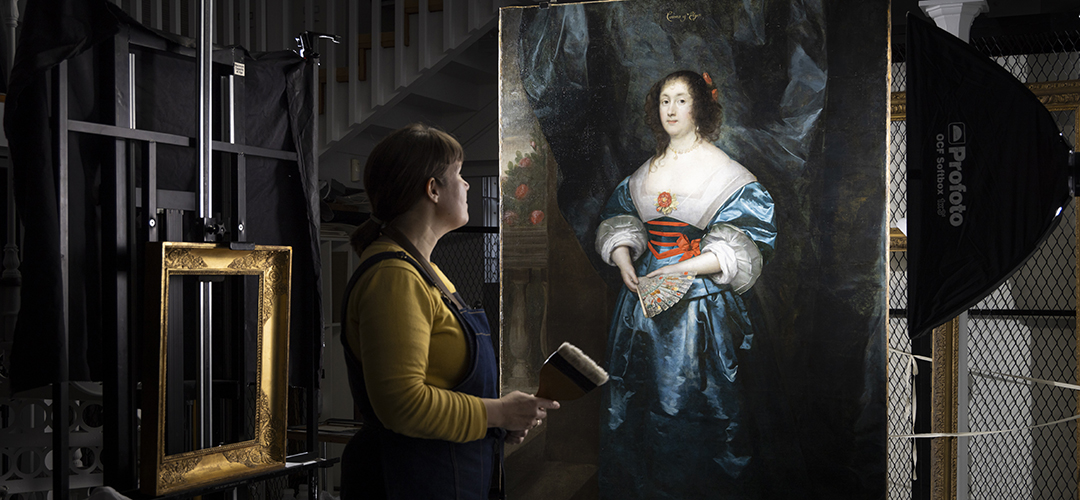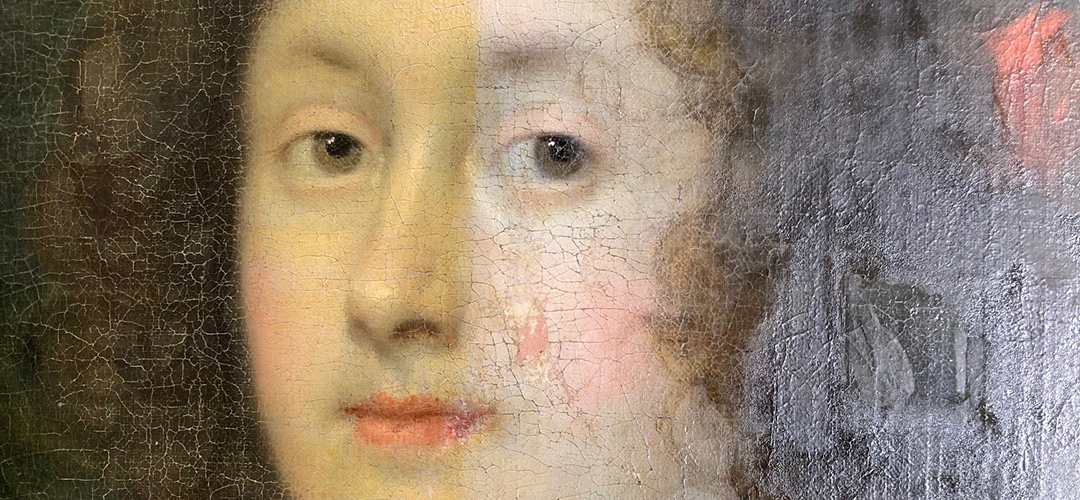24/11/2023
FASHION FOR FULLER LIPS NOT A MODERN PHENOMENON: ENGLISH HERITAGE REVEALS JACOBEAN LADY’S ORIGINAL BEAUTY
- Charity’s conservation experts reveal 17th-century painting received a touch-up to its sitter’s features, including her lips and hair
- Newly conserved painting will go on display at Kenwood in London on 30 November
Think Kylie Jenner’s penchant for fuller lips reflects a modern beauty phenomenon? Think again, says English Heritage as the charity revealed today (24 November) that a painting within its own collection of a Jacobean “beauty” received a much later touch-up involving plumper lips and a lower hairline. After hours of careful conservation, experts have revealed the true face of noblewoman Diana Cecil as her portrait goes on display at Kenwood House in London on 30 November.
Diana Cecil (1596–1654) was the great-granddaughter of William Cecil, Lord Burghley, one of Elizabeth I’s closest friends and advisors and the Cecils were a powerful noble family at the Jacobean court. In her youth, Diana was one of the great beauties of the age, but it seems a later artist may have had other ideas. Painstaking conservation work of a full-length portrait of Diana has revealed overpainting on her lips to make them fuller, as well as overpainting on her hairline which makes her forehead appear smaller. While the painting had at some point been rolled widthways, which caused significant damage and may have resulted in the need for a touch-up, the overpainting of these features is a curious choice. English Heritage experts have now removed the yellowing layer of old varnish to reveal Diana’s true colours, as well as revealing her lips and hair as they were originally painted. In removing the varnish, another remarkable discovery was made, hidden in the painting’s curtain – the date of the portrait was uncovered as 1634 (previously thought to be 1638) as well as the artist’s signature, that of Cornelius Johnson.

Alice Tate-Harte, Collections Conservator (Fine Art) at English Heritage, said: “As a paintings conservator I am often amazed by the vivid and rich colours that reveal themselves as I remove old, yellowing varnish from portraits, but finding out Diana’s features had been changed so much was certainly a surprise! While the original reason for overpainting could have been to cover damage from the portrait being rolled, the restorer certainly added their own preferences to ‘sweeten’ her face. I hope I’ve done Diana justice by removing those additions and presenting her natural face to the world.”
Kenwood is home to two portraits of Diana Cecil – one painted by artist William Larkin when she was around 15, and this work by Cornelius Johnson when she was around 31. Johnson portrays the older Diana in a fashionable blue satin bodice and full, trailing skirt. By contrast to the earlier portrait of Diana, elite fashion is characterised by understated elegance, rather than opulently patterned fabric or complicated layering. Plain silk, satin or taffeta were the height of fashion, with one or two focal points, such as the red ribbons laced across the front of her bodice, holding the stomacher in place, and a matching red rose at her breast and a patterned fan, which Diana holds half-open in front of her. Both paintings of Diana at Kenwood are part of The Suffolk Collection – collected over a period of 400 years by generations of the earls of Suffolk and Berkshire (Diana’s sister, Elizabeth Cecil, married Thomas Howard, 1st Earl of Berkshire. He was the second son of the 1st Earl and Countess of Suffolk).

Diana came from a powerful noble family and also married powerful men – first Henry de Vere, 18th Earl of Oxford, who died on a year later, and then in 1629 Lord Thomas Bruce, later 1st Earl of Elgin. Full-length portraits were an established convention by the early 17th-century and many members of the aristocracy were depicted on this impressive scale. In the case of The Suffolk Collection, such portraits serve as a visual representation of powerful networks of extended family and friendship. This ancestral collection was given to the nation in 1974 through the will of Margaret ‘Daisy’ Howard, 19th Countess of Suffolk, under the auspices of her daughter-in-law Mary Greville Howard.
The newly conserved painting of Diana Cecil will go on display – next to its pair, a portrait of her husband Thomas Bruce, the 1st Earl of Elgin – at Kenwood, a free site, on Thursday 30 November.